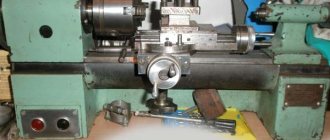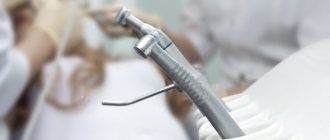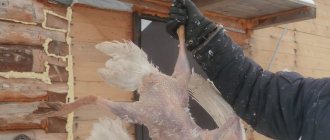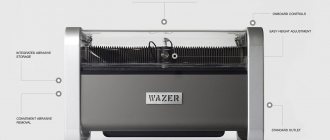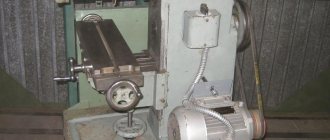We will advise you on any questions!
Plastic parts are widely used in all industries. The scope of human activity is also associated with the use of plastic, from building materials and household appliances to kitchen utensils. The most popular method of manufacturing various products is plastic injection molding technology. Modern equipment makes it possible to automate the production process and obtain products with excellent technical characteristics in a short time with minimal investment. Polymer products are recyclable and therefore are an environmentally friendly material.
Injection molding machine: the basis for the production of high-quality polymers
For the proper functioning of injection molding machines, it is necessary to timely service the toggle mechanism, correctly calculate the clamping force, and also monitor the installation parameters of the injection mold. Compliance with technical requirements ensures uninterrupted operation of the equipment, which increases the profitability of the enterprise.
Injection molding machines: compact, high-performance devices, easy to operate and maintain, allowing you to combine different types of materials. offers cooperation on individual terms to order wear-resistant plastic products with a high degree of reliability. Consultations on technical and commercial calculations are free.
What is plastic injection molding
Large-scale and mass production of plastic parts involves a complex technological process of injecting molten plastic under high pressure into a prepared injection mold made of metal. The liquid mass evenly fills the volume and crystallizes, acquiring the required shape. Thanks to injection molding technology, it is possible to obtain high-quality products. To implement the method, complex, expensive equipment is used that provides high productivity. Almost half of the polymer parts are produced using this method. Thermoplastic granules, as well as thermosetting powders, are used as raw materials for the production process, giving the finished products the required physical and performance qualities. Thermoplastic components retain their parameters during recycling, while thermoset components undergo irreversible chemical reactions and form an infusible material.
The prepared polymer components are loaded into the hopper of the injection molding machine, in which they are melted and homogenized. Next, the mass is injected at speed, thanks to the pressure created, through special channels into the prepared form. The cavity quickly fills. After solidification, a casting is formed. The quality of polymer products depends on the injection speed. Worm-type plasticizers are the most popular. They are characterized by high productivity and better homogenization of the molten mass. Less popular piston type equipment. It provides the supply of molten polymer at high speed into the injection mold and provides the opportunity to obtain a marble effect in the case of preparing a mixture of multi-colored plastics. In production, the use of a separate method is allowed. It involves the preparation of the molten mass in a preplasticizer with a worm mechanism, and the dosing and injection of the viscous mass into the mold is carried out using piston-type equipment.
Manufacturing method
Algorithm for selling any type of plastic products:
- formation of an unambiguous chemical composition;
- gas is introduced into the polymer environment;
- the resulting mass is given the desired casting;
- installation of the final form.
At the initial level, different components are mixed to obtain a plastic substance. After this, gas is added to the polymer in a specific way: either by introducing fast-boiling substances or by mechanical foaming.
They disappear when heated or introduced under gas pressure. The manufacturing method depends on the type of polymer and products. There are several ways to make plastic products:
- the presence of castings - the plastic mass is turned into liquid and poured into various forms similar to the finished product. As a result, quite a lot of items are formed: dishes, stationery;
- thermoforming;
- compression molding - during the manufacturing process, the required amount of material is placed in a mold, the halves are connected, and then a finished part is formed;
- encapsulation;
- vacuum forming - the required shapes are obtained from sheets of plastic under different pressures;
- layering molding;
- blowing - the heated mass is poured into the mold. The mold closes and fills with air. The polymer spreads over the entire inner surface in equal quantities;
- extrusion - the mass is softened and suppressed through a matrix, which forms the required shape;
- compression molding - the workpiece is compressed inside the mold, excess material exits through the cracks.
Raw materials, materials for injection molding of plastics
The raw materials for plastic injection are thermosetting powders, as well as granules of thermoplastics and thermoplastic elastomers. All materials have different mechanical and physical characteristics.
The advantage of thermoplastic materials is that they can be recycled after the molding process. Thermosetting materials in the process of molding a product are subject to chemical processes that lead to the transformation of raw materials into an infusible and insoluble material.
Applications of polymer injection molding
Using technology that involves plastic injection molding, it is possible to produce simple and complex plastic parts. There are no restrictions on the dimensions and number of products. This method is used in the automotive industry, electronics, chemical and many other industries. Using the plastic injection method, it is possible to quickly and with the required level of quality produce:
- different packaging, lids and different caps;
- a wide range of children's toys;
- housings and components for electronic equipment;
- components for medical equipment and other products.
Injection mold
- The mold basically consists of two plates
that are attached to pressure plates. The front half of the mold is located next to the injection unit. The back half of the mold is attached to a movable plate that allows the molds to be opened and closed, as well as the clamping assembly adjacent to the ejection system. Before starting the molding cycle, both plates must be cleaned of dirt. - The mold
cavity is a figurative section in the mold plates that gives the plastic parts their final shape.
When the molten plastic enters the cavity, it takes on the shape of the hollow space and gains its volume. Most of the volume is in the front half of the form. The mold may have one or more cavities. - The dividing line
is a line that can be found in closed mold halves that indicates their separation. The parting line may be straight or curved in complex tool designs. Air is most easily released along the parting line; thus, molten plastic tends to move in this area. A line or curve may be visible on any finished part, indicating that the two sides of the part are formed on different plates.
Advantages of this technology
For the production of large quantities of polymer products, plastic injection molding technology is characterized by the advantages of high casting accuracy. By injecting the molten mass at an increased speed, the mold is uniformly filled, including microscopic holes. The method is characterized by many advantages due to which it is popular:
- Possibility of producing products of any geometric shape and degree of complexity. Thin-walled parts are manufactured. The complexity of the design depends on the mold, which is highly detailed and takes into account all the bends and holes of the future product.
- There is no need for subsequent machining of parts. Some products that are complex in design may require minimal processing.
- Mass production of an unlimited number of plastic parts. The service life of metal molds is tens of years, so they are used for the manufacture of a huge number of polymer products.
- Quick payback when organizing the production of large batches of plastic products. At the same time, the cost of one product decreases without deterioration in quality as the number of copies produced increases. This dependence is explained by a one-time investment of funds at the preparatory stage for the release of a certain type of product.
Technology involving pressure casting has significant costs at the preparation stage, so its use is unprofitable for the manufacture of single products or small batches.
Mold channel system
- The alignment ring aligns the nozzle to the front plate of the mold.
- The sprue is the hole on the front plate of the mold. This is where the nozzle is located.
Gate
is the first pass of melt from the injection unit nozzle and the front half of the mold. This is the main channel to which several nozzles are connected, through which the molten plastic is distributed into the mold cavity.
The gate directs the flow of molten plastic into the cavity by narrowing its flow path. It is located at the end of each trough where the molten plastic is introduced. The cavity may contain one or more gates.
Other mold features include vents that eliminate trapped gases inside the mold and a cooling duct that facilitates heat transfer to the coolant.
Staged production
The process, organized using injection molding technology, is carried out in stages. Complex work consists of preparatory operations and product formation.
Preparatory work includes 3D modeling of future products. In order to create a model, specialists analyze and study drawings, photographs and product descriptions. After creating a three-dimensional model using special software and approving it, the following operations are performed:
- A prototype is made, which is a sample of the part being produced. In order to speed up the process, modern equipment (printers) that perform 3D printing is used. The manufactured prototype allows you to evaluate, test under extreme loads and test the finished product. If inaccuracies and defects are detected, changes are quickly made to the three-dimensional model until an ideal part is obtained that meets all requirements.
- Molds are designed. At this stage, all the details (lines, bends, holes, etc.) are carefully worked out based on the approved 3D model.
- Molds are made to be filled with the molten mass. For this purpose, the three-dimensional model is divided into parts. Each received element is manufactured separately. At the last stage, the parts are assembled into a form.
- Casting of the first copy from plastic. It is carefully checked and tested. If inaccuracies are detected, the injection mold is modified.
Depending on the complexity of the products, preparation work may take several weeks or months. The quality of future polymer products depends on the completeness and accuracy of operations at this stage.
The product formation process involves:
- Melting the components and feeding the melt into the mold.
- Creation of pressure for the purpose of rapid filling and uniform distribution of the polymer mass over the mold.
- Cooling the filled volume until the plastic has completely hardened. The time required for polymer crystallization depends on many parameters: the type of plastic used, melt viscosity, temperature in the mold, etc. For oversized parts, the cooling process lasts for several seconds.
- Receiving the finished product. After complete cooling, the mold is separated to obtain the part.
The final cost of products is calculated individually for each type and depends on the design complexity of the product, the type of polymer material, the volume of the product batch and other factors.
Closing zone
In the clamping unit, the mold halves are closed before the molten plastic is injected and held in place after the molten material is placed in the cavities. The clamping unit is responsible for the following processes:
- Applying enough clamping force to counter the injection force, keeping the mold halves closed during the injection phase until the soaking phase.
- Removing the finished part after cooling.
- Opening and closing mold plates between molding cycles.
- Holding the mold platen in the correct position.
The clamping unit consists of the following parts:
- Press form
, consisting of two parts - stationary and movable. The stationary half of the mold is the front half of the mold with the nozzle of the injection unit. The movable plate moves the back half of the mold by sliding on a guide while opening and closing the mold.
- Guides
support the moving plate during movement. They align the mold plates together. The size of the tie limits the size of the mold that can be placed in the injection molding machine.
- The clamping system is responsible for moving the moving plate to the fixed plate.
Methods used for plastic injection molding
To implement the technology for producing products from molten polymers, injection molding machines (TPAs) are used, which are special injection molding units that differ in the location of injection units. The melt is injected vertically downwards or in a horizontal plane. According to the type of raw materials used, injection molding machines are classified, providing single-component or multi-component injection molding of plastics, performed in different ways.
Injection
This method is the most common. The required portion of the molten mass accumulates in the cylinder and is injected under pressure into the mold. Casting pressure is ensured at 200 MPa. The process of feeding the mass occurs in seconds. As a result, it is possible to produce parts with complex configurations. It is possible to obtain different wall thicknesses. Thermoplastics and thermosetting plastics can be used as raw materials. It is possible to use a multi-cavity injection mold. The volume of molten mass must exactly match the sprues.
Intrusive
Designed for casting thick-walled plastic products. This plastic injection method involves feeding molten material into a mold by rotating a worm gear. In order to compensate for the natural shrinkage formed after cooling the mass, the worm, with an axial movement, supplies the missing melt. When implementing this method, the amount of injected mass may exceed the volume required to cast the part. The casting pressure is insignificant, so the method is used to obtain products of simple shapes with limited nesting.
Injection-press
This plastic molding method allows the production of products characterized by a large pressing area. The pressure drop during the filling process causes different strength characteristics in the center and in the outer zones of the parts. The peculiarity of the technology is the formation of mass pressure not only through injection, but also through the use of a pressing mechanism of a moving unit. Therefore, forms are used that structurally provide for the movement of parts after they are connected.
Gas injection
IGL is a new method used for polymer processing. The essence of the technology is to melt raw materials and feed the mass through injection units in order to fill the mold by 80–95%. A gas mixture (carbon dioxide) is pumped through a special nipple using a compressor under a pressure of 80 MPa. It inflates the melt, filling all the depressions and increasing the thickness of the plastic. After the part is formed, the gas evaporates into a special receiver, and the required amount of molten mass is supplied to the mold to complete the manufacture of the product.
Gas injection molding provides the opportunity to save almost half of the expensive raw materials used, reduce the likelihood of defects, reduce production cycle time, and optimize the cost of tooling. The technology requires precise control of the LM, is characterized by a complex nozzle design and increased requirements for the injection system.
Multilayer
This method involves the use of two or three injection units for the process for the purpose of plasticizing a polymer characterized by certain properties. The result is multi-colored parts, the structure of which is made up of different types of polymer materials. Multilayer plastic injection molding is used to produce hybrid structures in which non-critical parts are made from recycled materials.
Sandwich casting
The technology provides for variable supply of molten polymer into the mold from different plasticizers. For this purpose, two injection modules are connected to a sprue with a switching mechanism, which uses a needle valve. A valve connects them to the mold in a specific sequence or simultaneously. From the first, a mass is injected under pressure to form the outer coating of the part being manufactured. The internal cavities are filled with polymer coming from the second unit. At the last stage, the first node is switched again to add melt.
Co-injection
In order to ensure this type of injection molding, nozzles made according to a special design in the form of a dividing head are used. This method is widely used to produce parts with more than two layers, completely or partially different in color.
Multi-component mold casting
The MCIM method provides the opportunity to organize the production of multi-colored products with a diverse design. In these parts, the central and peripheral parts are made of different polymer materials. When implementing this method, injection units operate in standard mode, and the configuration of the part is formed using a special mold structure. It structurally consists of two systems that are closed with the first and second nodes, and also includes movable inserts that are moved using pneumatic actuators. Each insert forms the structural elements of the part. The units operate in different modes (injection or intrusion) independently of each other. Thanks to this design feature, it is possible to form products of large sizes.
Rotary
This method is a type of plastic molding into complex shapes using a removable insert. After the central part of the part is formed (the first node works), the insert is removed. The molten mass from the second module enters the vacated volume. The production cycle is characterized by an additional operation involving the separation of the injection mold in order to remove or install the insert. This method has lower productivity.
Trimming
The final step in the production of injection molded plastic products is trimming, in which excess plastic resulting from the flow of molten plastic is cut from the molded part and each molded block is separated from the remaining molded parts. Trimming occurs on separate equipment.
During the injection of molten plastic, the mold channels (srue, guides and gates) are filled. The molten plastic in these channels also solidifies along with the melt inside the cavities. There may also be highlights at the edges of the part. Once cooled, the excess plastic sticks to the part that needs to be cut.
hot runner molds
for casting , the sprue channels of which are heated using spiral heaters and flexible heating elements, sprues will not be formed, since the plastic in the sprue channels will remain hot.
Features of the use of various polymers
For plastic injection molding, different components are used that differ in physical parameters.
Low density polyethylene
LDPE is characterized by rapid melting. After cooling, it crystallizes and changes hardness. It is necessary to maintain a certain pressure and ensure the most uniform heating of the mold. Therefore, for cooling, water inlet is provided near the gating nozzles, and outlet is provided at a distant point. Filling with coolant is quick and the mold is well ventilated.
High Density Polyethylene
Compared to polyethylene NP, HDPE is characterized by better crystallization and a lower degree of fluidity in the molten form. Plastic molding of this type is widely practiced to produce products with thin walls, but at the same time sufficient structural rigidity is ensured.
Polypropylene
PP is characterized by crystallinity not exceeding 60%. The process is performed under reduced pressure and a fairly high plasticization temperature, which, depending on the type of material, can reach 280 ºC. The melt pressure is formed at a level of 140.0 MPa. The viscosity of the resulting mass is regulated by the shear rate and slightly depends on the temperature regime.
Polystyrene
PS is a material that, as a result of injection molding technology, is characterized by easy fluidity when molten. Allows the production of products that are characterized by structural rigidity and thin walls. The polymer is sensitive to overheating.
Impact-resistant polystyrene
UPS is a polymer that has a slightly higher viscosity than regular polystyrene and shrinks more when cooled. Used for thin-walled parts with increased resistance to mechanical stress.
Acrylonitrile butadione styrene plastic
ABS plastic is characterized by high viscosity in the molten state, is difficult to process and requires high pressure. It is used for the manufacture of parts with thin walls, but unlike, for example, polystyrene, ABS plastic has high rigidity and shock resistance.
Polymethyl methacrylate
PMMA makes it possible to obtain products of various shapes and configurations. It is characterized by low thermal stability and sensitivity to overheating with loss of physical parameters. Requires additional drying. The processing process requires precise temperature control. The peculiarity of the material is the formation of bubbles when injected into a cold mold, therefore the number of smooth transitions in it is minimized.
Polyvinyl chloride
PVC is widely used for injection molding because it is easy to process. The material is sensitive to temperature conditions and loses its properties when overheated. When in a molten state, it is characterized by instability and autocatalytic destruction, manifested in a different color shade. The color range can vary from ivory to cherry. To obtain all the properties of the polymer, it is necessary to carry out the plasticization process in a minimum time.
Polyamide
PA is a crystalline thermoplastic, characterized by hygroscopicity and good mass flow. When in a molten state, the volume increases by 15%. Due to the low thermal stability, the molding process for this type of plastic is completed in a minimum amount of time. Bubbles may form in the melt. The material requires additional time to dry thoroughly. The plasticization process is carried out at a pressure of 100 MPa. When filling injection molds, particle orientation is allowed.
Polycarbonate
PC is a heat-resistant polymer. It is characterized by high thermal stability and increased viscosity in the molten state, depending on the temperature. The mold is heated to a temperature of 100 ºС. Due to the increased hygroscopicity of the material, normal injection molding requires preheating in the cylinder of the injection molding machine and thorough drying.
Polyethylene terephthalate, polybutylene terephthalate and polyoxymethylene
PET, PBTF and POM are classified as polymers characterized by high thermal stability. The molding process for this type of plastic involves additional drying until the moisture content is reduced to 0.01%. In the molten state they have a medium viscosity, which decreases with decreasing temperature. To obtain thin-walled products, blowing with air is used.
Main types of defects and methods for eliminating them
During the injection molding process, due to violations of the technological process, excess melt temperature and other factors, defects occur that reduce the quality of the product:
- Incomplete filling of the mold (underfilling). Occurs due to insufficient volume of injected polymer. This situation is possible due to weak heating of the melt, low fluidity of the mass, clogging of the nozzle or distribution channels.
- Exceeding the volume of the mold (overflow) during the plastic molding process, causing the formation of burrs at the joint (burst). The defect occurs due to a malfunction of the dispenser or exceeding the permissible temperature of the molten polymer. The release of excess mass also occurs when the mold is not closed tightly enough.
- Joint seams are visible at the boundary of the soldering of individual parts of the part, which are characterized by low strength. Such joints are formed when the plasticization temperature is too low. The cause of the defect also lies in improper design or insufficient heating of the injection mold, which leads to premature cooling of the streams before they merge. As a result, complete welding cannot be achieved.
- Bubbles form on the surface of the product, and there are voids inside. Such a defect is the result of the presence of volatile components in the melt, characterized by increased gas release when overheated. The soft mass swells.
- Formation of shrinkage cavities (depressions) on the surface. The cause of the defect is increased shrinkage of the mass in case of overheating or insufficient volume of molten mass due to low pressure, as well as insufficient throughput of the nozzle. Such sinkholes appear when the injection mold is heated unevenly and has insufficient ventilation.
- Warping of manufactured parts. Defects occur when excessive internal tension occurs due to temperature unevenness of parts of the mold. Poor-quality products are also obtained if the time required to hold the mass for complete hardening is not observed.
- Cracks on the surface. They occur due to residual stress or in case of strong adhesion of the liquid mass to the walls.
- Surface defects of parts, manifested by scratches and chips. Defects occur in the event of careless handling of finished products or poorly designed molds.
- Patterns that resemble frosty patterns on glass appear due to excessive amounts of moisture in the injected molten mass. A deficiency occurs when the drying and ventilation process of the mold is disrupted.
- If there is moisture in the polymer material in excess of the established norm, delamination of the structure occurs. The defect also occurs when there are frozen sprues that are not aligned with the main mass.
- Uneven (different) tone color of the product. The reason is the use of a thermally unstable dye and overheating of the molten mass.
- The received product does not meet the required dimensions, exceeding the standard tolerance. It occurs due to severe shrinkage of the plastic during hardening or a poorly made mold.
Plastic molding at home
Before starting the process, it is necessary to prepare the area. A table is perfect for equipment such as a mini injection molding machine. This unit weighs about 50 kg. Such a machine will require 20% of the maximum electricity for 10 hours of operation.
For example, if the power is 1.7 kW, then in 10 hours 3.4 kW will be required. The machine is designed to work for one person. In the process of molding plastic products, it is necessary to comply with all safety and sanitation standards of the industry.
It takes 40 seconds to produce one product, which means that specialists can produce about 100 parts in an hour.
In addition, you will also need additional equipment - a crusher.
Plastic crusher
A mini plastic injection machine injects the mass directly into the part. If you completely follow the instructions and follow all the rules of casting, there is practically no defect.
Often craftsmen begin home production by using thermoplastics - the material is not easy and requires a scrupulous attitude. Casting from this material involves the use of several preparatory stages:
- tremoplast must be cleaned from the upper layers of contamination;
- It is necessary to start melting at low temperatures, increasing the degrees by an equal amount;
- To cool the mold, it is necessary to apply a sharp temperature difference.
It is difficult to work with such material, so it is better to hire an assistant at home. This solution will help to carry out all operations on the machine evenly, as well as to cool the product in a timely manner without breaking the standard shape.
Examples of defects and solutions
High-quality plastic injection molding that meets standard requirements is ensured by using a technically sound machine, strictly following technological steps and using high-quality raw materials. The table lists the types of defects and actions to prevent them.
| Defect | Why does it appear | How to eliminate |
| On the surface of the product: | ||
| bubbles | The moisture content of the polymer is exceeded | Drying of used raw materials |
| matte spots | Superheated viscous mass | Reduced melt heating. Polishing injection channels |
| dark stripes | Local overheating of the melt. Free zones in the intake ducts | Reducing the plasticization temperature. Removing Dead Zones |
| film | Used a lot of lubricant for the injection molding structure | Cleaning the cylinder, mold. Minimizing lubrication |
| lines | Increased viscosity of the polymer material and uneven volume filling | Control of completeness of filling of the pressing mold |
| presence of voids | Violation of the temperature regime due to air leakage into the mold | Increasing uniform ventilation efficiency. Reducing the melt feed rate |
| Local burnout of a part | Heating of gas in the molding volume due to its compression | Ensuring form ventilation |
| Dirty product | Foreign particles or worm defects in the melt | Control of the raw materials used and the planes in contact with the viscous mass |
| Surface waviness on the side of the part opposite the sprue | Cooling of the mass during injection | Temperature adjustment |
| White spots that look like bubbles | Excessive heating, low casting pressure, short polymer exposure | Reducing channel heating, increasing pressure, adding time for polymer crystallization |
| Seams near the sprue | Cooling of the molten mass too quickly at the feed point | Heating the mold near the sprue, increasing the nozzle geometry |
| Weak welded joints | Accelerated cooling of the viscous mass at the stage of filling the volume | Heating the mold and polymer. Raising injection pressure |
| Part delamination | Ingress of third-party inclusions. Large temperature difference between viscous mass and shape | Cleaning the cylinder and channels |
| Grat at the junctions | Ineffective part mold locking | Increasing the closing force, reducing the feed rate of the viscous mass, reducing the pressure and reducing the volume of the feed mass |
| Difficulty removing products | Violation of technology, form of suboptimal design | Reducing pressure, polishing the mold mirror, forming air layers |
Injection molding technology, implemented on modern equipment in compliance with process requirements and the use of high-quality raw materials, allows us to produce large quantities of high-quality products that are in demand in various industries and domestic conditions. By choosing the optimal plasticization method, it is possible to establish cost-effective production of parts of any complexity.


